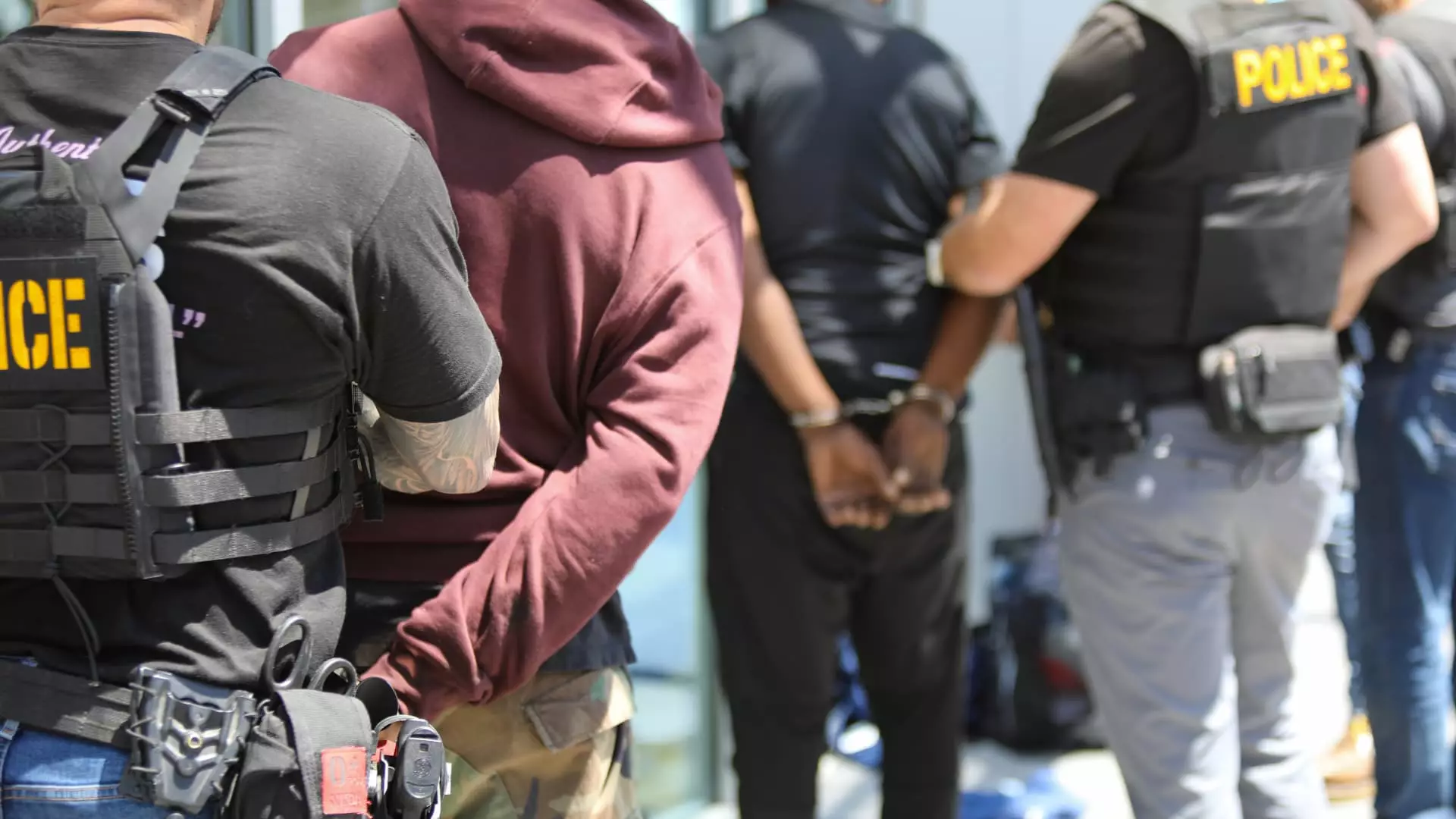In an unprecedented move, law enforcement across 28 states recently conducted a coordinated raid targeting organized retail crime, resulting in the arrests of approximately 750 individuals. Spearheaded by Illinois’ Cook County regional organized crime task force, this undertaking marks a critical juncture in combating retail theft, which has surged alarmingly in recent years. Various retailers, including reputable names like Home Depot, Macy’s, and Walgreens, have banded together with over 100 jurisdictions to thwart the growing threat. What this reveals is no minor incident; rather, it reflects a systemic crisis that demands immediate, robust responses from both law enforcement and the legislative framework surrounding retail theft.
A Need for Stronger Legal Action
Organized retail crime transcends the traditional definitions of shoplifting, morphing into sophisticated networks of thieves who collaborate to pilfer goods en masse and convert them into quick cash. This phenomenon has escalated dramatically, with the National Retail Federation reporting a staggering 93% spike in shoplifting incidents from 2023 compared to 2019, alongside a shocking 90% increase in financial losses associated with these crimes. Critics argue that the underlying issue lies within lax enforcement mechanisms and outdated felony thresholds that allow petty thieves to operate with impunity. Cook County State’s Attorney Eileen O’Neill Burke has taken commendable steps since taking office to augment felony retail theft charges, but the question remains: Are such measures enough to dissuade an increasingly brazen criminal class?
The threshold for prosecuting felony theft cases, previously set at $1,000 or more in stolen goods, has been lowered to cases involving goods exceeding $300 or prior felony convictions for shoplifting. This shift is essential but raises concerns over whether it will be a panacea for the propelling tide of organized retail crime. As toys and electronics become staple targets for thieves, the legal system must strive to keep pace with evolving criminal tactics characterized by daylight heists and bizarre stunts.
Collaboration: The Key to Success
The success of the coordinated crackdown largely rested upon the partnerships formed between retailers and law enforcement agencies. This laborious operation exemplifies the power of intelligence-sharing among jurisdictions to combat retail crime more effectively. According to Dan Petrousek, Senior Vice President of Loss Prevention at Ulta Beauty, collaboration can yield meaningful impacts in curtailing retail crime. Indeed, the participation of retailers during the operation signals a willingness to confront these challenges head-on, yet their condemnation of organized retail crime raises pressing questions regarding their previous inaction. As the blitz comes to a close, retailers within the network are piecing together insights gained during the operation. This data will be crucial in devising strategies to outmaneuver a criminal sector that is constantly evolving.
The Bigger Picture: A Society at Risk
The coordinated effort against organized retail crime operates within a broader societal context where crime rates and public safety have become essential talking points in political discourse. The alarming frequency of such high-stakes incidents raises ethical and moral dilemmas regarding the treatment of petty criminals, public safety, and community well-being. While the situation is dire, the penal response must consider the underlying social issues that contribute to such illicit activities. A balanced approach involving preventative measures and restorative justice could foster community resilience and ultimately disrupt the cycle of crime.
It is crucial for legislators to steer conversations that can pivot toward long-term solutions rather than merely treating the symptoms. Advocacy for stricter laws and comprehensive anti-theft programs can potentially align with community interests, creating a safer retail environment and elevating the standards for law enforcement accountability. As society grapples with the reality of organized retail crime, stakeholders across the board—from local authorities to policymakers—must engage in meaningful dialogue that prioritizes community concerns without resorting to draconian policies.
The recent arrests may momentarily disrupt the organized retail theft cycle, but if past trends are any indication, a more systemic overhaul may be paramount to effectively dismantle these networks. Through thoughtful discourse and concerted action, both the retail sector and law enforcement can herald a new age of response that adequately addresses the epidemic of retail crime while promoting public safety and community harmony.

